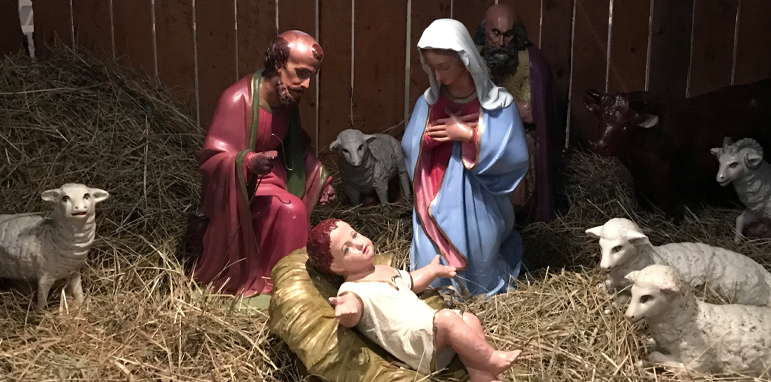“On the 8th day of Christmas, my true love gave to me...“Everyone is familiar with the carol “The Twelve Days of Christmas.” And although some people have already thrown their Christmas tree to the curb and taken down their Christmas decorations, there are the reminders that “Remember, Christmas is not just one day.”
True, Catholics recognize that Christmas is not only on December 25. The secular carol reminds us there are twelve days of Christmas to January 6, the Epiphany. But the Church’s liturgy actually emphasizes the eight days or octave of Christmas. The Church recognizes that the days of the Christmas Octave are repeating the solemnness of Christmas for eight days, concluding on a high note with another solemnity that echoes the solemnity of the Nativity of the Lord.
What Is an Octave?
An octave is the eight-day period during which Easter or Christmas is celebrated and includes the actual feast. The eighth day is also called the octave or “octave day,” and days in between are said to be “within the octave”:
Octave means an eight-day celebration, that is, the prolongation of a feast to the eighth day (dies octava) inclusive. The feast itself is considered the first day, and it is followed by six days called “days within the octave.” The eighth or octave day is kept with greater solemnity than the “days within the octave” (With Christ Through the Year, Bernard Strasser, 1947, p. 39).From Christmas Day until January 1st, the Solemnity of the Blessed Virgin Mary, the Mother of God, is the Octave Day of Christmas. The Liturgy gives the clues that every day within the octave is treated the same as the original feast day of the Nativity of our Lord. The Liturgy of the Hours repeats Sunday Week I every day of the octave. The Mass has a special Communicantes (In communion…) to insert every day of the Octave when Eucharistic Prayer I is used:
Celebrating the most sacred night (day)
on which blessed Mary the immaculate Virgin
brought forth the Savior for this world,
and in communion with those whose memory we venerate,
especially the glorious ever-Virgin Mary,
Mother of our God and Lord, Jesus Christ...
Finally, the Gloria is repeated each day of the Octave.
Despite having four days within the octave that are feasts: St. Stephen, St. John the Evangelist, the Holy Innocents and the Holy Family, each of these days is another “day of the octave of Christmas.”
The octave gives us time to impress upon our souls the mysteries, joys and graces of the principal feasts of the Church year.
Why eight days? The number eight is supposed to represent perfection or rest. Some have traced the origins back to Jewish festival customs, such as circumcision of the Jewish boy was on the eighth day, the feast of Tabernacles lasted seven days and concluded with a solemnity, forming an octave, and the feast of the Dedication of the Temple by Solomon and purification lasted eight days. It is also said that Jesus rose from the dead on the eighth day (which is why Sundays are considered on par with solemnities). The development of the octaves within the liturgy was gradual, and it was not until the 8th century that Rome celebrated octaves for certain feasts.
By Jennifer Gregory Miller
From: Catholic Culture


